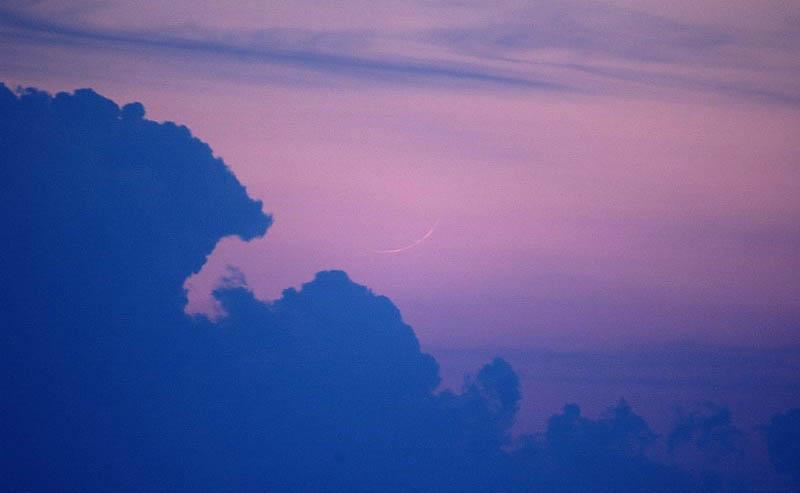Seeing the Moon before it is 24 hrs old has become a competitive sport, with Stephen O’Meara being the apparent champion with a record of 15 hr, 32 min. On June 7, 2005, the less than one day old Moon was once again a challenging and frustrating target. For many observers clouds interfered, and for others the lack of contrast between a nearly setting Moon and a hazy horizon made it impossible to find. But Italian photographer Riccardo Di Nasso was prepared and lucky. In his image, just beyond the clouds, and only 2.5 degrees above the Tirrenum Sea, is the broken crescent of a 21 hr 45 min old Moon. The thin spots in the pencil-width crescent are where the darkness of maria Marginis, Smythii and Australe reflect little sunlight.
This LPOD was originally published on June 12, 2005.
Technical Details:
June 7, 2005, 19h 41min UT. Nikon D70 digital camera with 400 mm lens at ISO 640, F/5.6, exposure 2 sec, +1.0 EV
Related Links:
Young Moon Hunting (S&T)
SUPPORT LPOD - VISIT A SPONSOR (CLICK AN AD BELOW)!
COMMENTS?
Click on this icon File:PostIcon.jpg at the upper right to post a comment.




